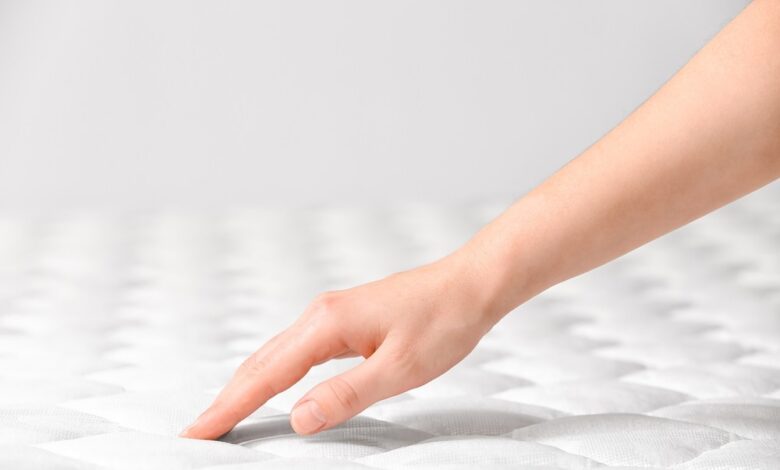Before You Buy a Mattress: Read This Comprehensive Guide

Choosing the right mattress is one of the most important decisions you’ll make for your sleep health and overall well-being. With so many types, materials, and price ranges available, the process can quickly become overwhelming. A mattress isn’t just a purchase—it’s an investment in your comfort, posture, and long-term health. This comprehensive guide will walk you through everything you need to know before you buy a mattress, so you can make an informed decision that best suits your needs.
Understand Your Sleep Needs
The first step in choosing the right mattress is to assess your personal sleeping habits. Are you a side sleeper, back sleeper, stomach sleeper, or a combination of all three? Your sleeping position significantly impacts the kind of support and firmness your body needs.
- Side Sleepers often require a softer surface to cushion their shoulders and hips.
- Back Sleepers benefit from a medium-firm mattress that supports the natural curve of the spine.
- Stomach Sleepers usually need a firmer mattress to prevent their hips from sinking, which can lead to back pain.
If you suffer from chronic back pain, arthritis, or joint problems, these factors should also be considered in your decision-making.
Know the Types of Mattresses
Mattresses come in several types, each offering distinct benefits and drawbacks:
- Memory Foam: Known for contouring to the shape of your body, memory foam mattresses are ideal for pressure relief and motion isolation. They’re great for couples and those with back pain.
- Innerspring: These mattresses use steel coils for support and often have a bouncier feel. They’re generally more breathable but may lack the contouring support of foam.
- Hybrid: A combination of innerspring coils and foam or latex, hybrid mattresses offer both support and comfort. They’re suitable for sleepers who want a balance between firmness and softness.
- Latex: Naturally hypoallergenic and breathable, latex mattresses are durable and offer a responsive, buoyant feel. They’re ideal for eco-conscious shoppers.
- Adjustable Beds: These are ideal for people with medical conditions or snoring issues. They allow you to change the angle of your mattress to better suit your needs.
Consider Mattress Firmness
Firmness isn’t a one-size-fits-all feature. What feels firm to one person may feel soft to another. Mattress firmness is generally rated on a scale from 1 to 10:
- Soft (1-3): Ideal for side sleepers who need pressure relief.
- Medium (4-6): A popular choice for combination sleepers, offering a balance between comfort and support.
- Firm (7-10): Best for back and stomach sleepers, and people with heavier body weight who need more support.
It’s important to test a mattress if possible. Most stores allow you to lie down for a few minutes, or you can look for online retailers that offer home trials with free returns.
Set a Realistic Budget
Mattresses vary widely in price—from budget options under $300 to luxury models that cost over $2,000. While it might be tempting to go for the cheapest option, remember that your mattress impacts your sleep quality and health.
- Budget Range ($200–$500): You’ll find basic memory foam or innerspring options here, suitable for guest rooms or short-term use.
- Mid-Range ($600–$1,200): A solid selection of hybrid and memory foam mattresses offering better durability and comfort.
- Luxury ($1,500 and up): High-end materials, advanced cooling technologies, and longer warranties. These are long-term investments.
Always compare warranties, return policies, and trial periods when assessing value—not just the price tag.
Don’t Overlook Materials and Certifications
The materials used in a mattress affect not only comfort but also health and sustainability. Look for certifications such as:
- CertiPUR-US: Indicates the foam is free from harmful chemicals and low in VOCs.
- OEKO-TEX: Ensures textiles are safe and skin-friendly.
- GOLS (Global Organic Latex Standard) and GOTS (Global Organic Textile Standard): Signify organic and eco-friendly production.
If you have allergies or asthma, look for hypoallergenic and breathable materials.
Factor in Motion Isolation and Edge Support
Couples should pay close attention to motion isolation—how well the mattress absorbs movement. Memory foam is typically excellent at this. If one partner tosses and turns, a mattress with good motion isolation can help the other sleep undisturbed.
Edge support is also important if you share the bed or sleep near the edge. Hybrid and innerspring mattresses usually provide better edge support than all-foam ones.
Think About Temperature Regulation
If you tend to sleep hot, look for mattresses with cooling features such as:
- Gel-infused memory foam
- Breathable covers made of bamboo or cotton
- Pocketed coils for better airflow
- Phase-change materials that regulate body temperature
Latex and hybrid mattresses tend to sleep cooler than memory foam models.
Check Warranty, Return Policy, and Trial Period
A good mattress should come with a solid warranty—typically 10 years or more. Also, most online mattress brands offer sleep trials ranging from 30 to 365 nights. This allows you to test the mattress at home and return it if it doesn’t suit your needs.
Always read the fine print to understand any return fees or restocking charges.
Final Thoughts
Buying a mattress is more than picking something that feels good in the moment. It requires careful consideration of your sleep style, health needs, and budget. Take the time to research, test, and compare different options. A well-chosen mattress will not only enhance your sleep but also improve your energy, focus, and overall quality of life.
Before you click “buy” or walk into a showroom, keep this guide in mind—you’ll sleep better knowing you made the right choice.



